In Photos: The Eerily Beautiful Bats of Arizona
Growing scientific research

When thirty-five year old C. Hart Merriam came to the Colorado Plateau in 1890 he was already an accomplished zoologist, mammalogist, ethnographer and naturalist. He had helped found the National Geographic Society in 1888 but he was now back in the field to explore the virgin regions around the Flagstaff, Arizona Territory area. He was especially interested in a nearby inactive volcanic mountain range known as the San Francisco Mountains with its 12,633 foot high (3,851 m) Humphreys Peak, shown above. Four years of field work in this region resulted in Merriam publishing his "lifezone" concept of biogeographical elevation gradients based on the distribution patterns of terrestrial plants and animals. Merriam's lifezone model suggested seven distinct lifezones in North America from the earth's equator to the north pole. According to Merriam the Arizona Territory itself contain six of those seven lifezones. Over the years modern biologists have made significant adjustments to C. Hart Merriam's lifezone theory now referring to such regions as ecoregions with various biomes or habitat types. But Merriam's early work was ground breaking in the ways scientists would look at the relationships between elevation, slope, soil types and the amount of moisture that falls upon the land to the plants and animals that make their homes there.
Unique hunters
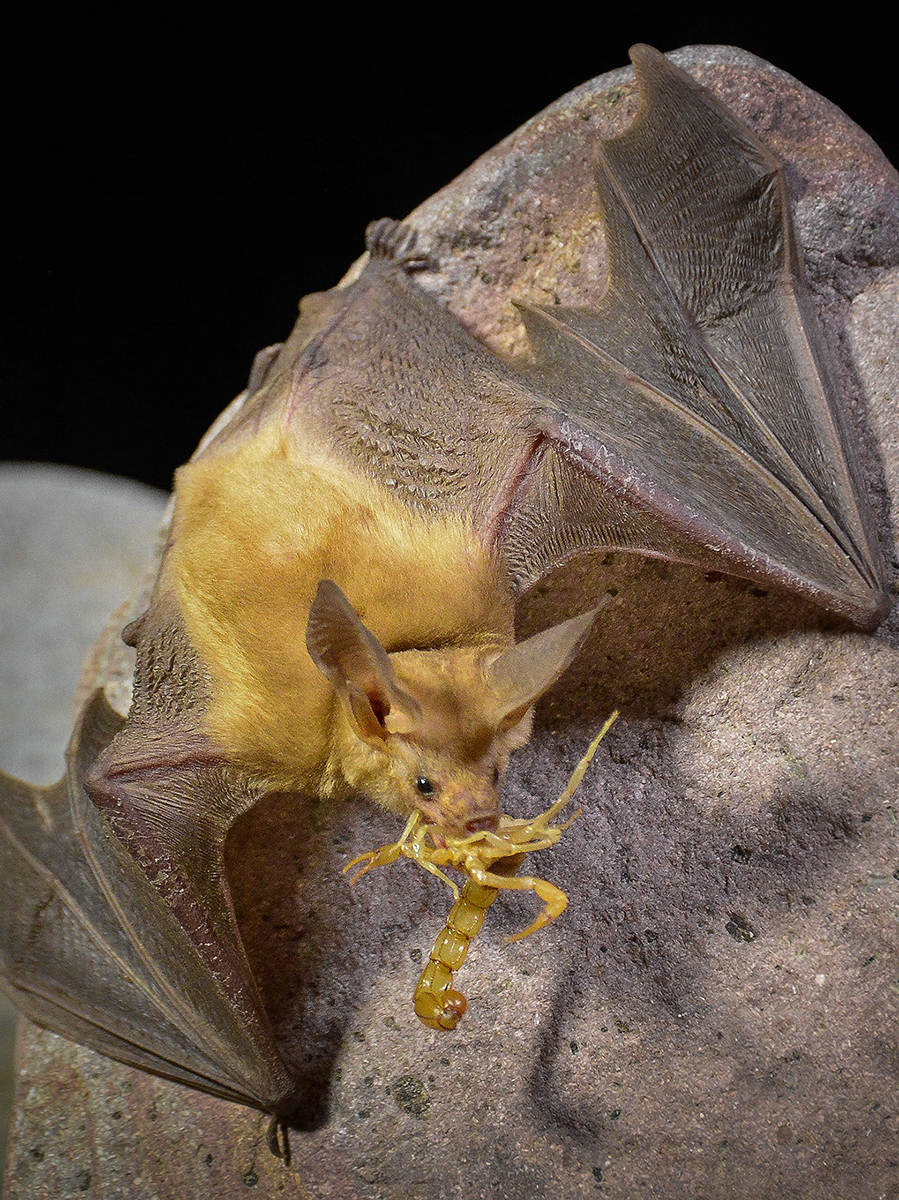
The Pallid bat, Antrozous pallidus, range across much of the American West and along the Pacific coast from Canada to Mexico. With eyes larger than most North American bats, the pallid bats is unique in that they catch most of their arachnid prey while moving across the ground in a variety of gaits and steps. Their ears are exceptionally large allowing these bats to actually hear crickets, scorpions, beetles, etc. walking on the ground. Since pallid bats forage on the ground, they too become susceptible to predators such as cats, frogs, coyotes, raccoons and snakes. Owls have been known to take pallid bats from the air while both are in flight. Pallid bats only live to 10 years in the wild and are sensitive to human habitat encroachment. In a single night of hunting, a pallid bat can eat half of its body weight.
A big family
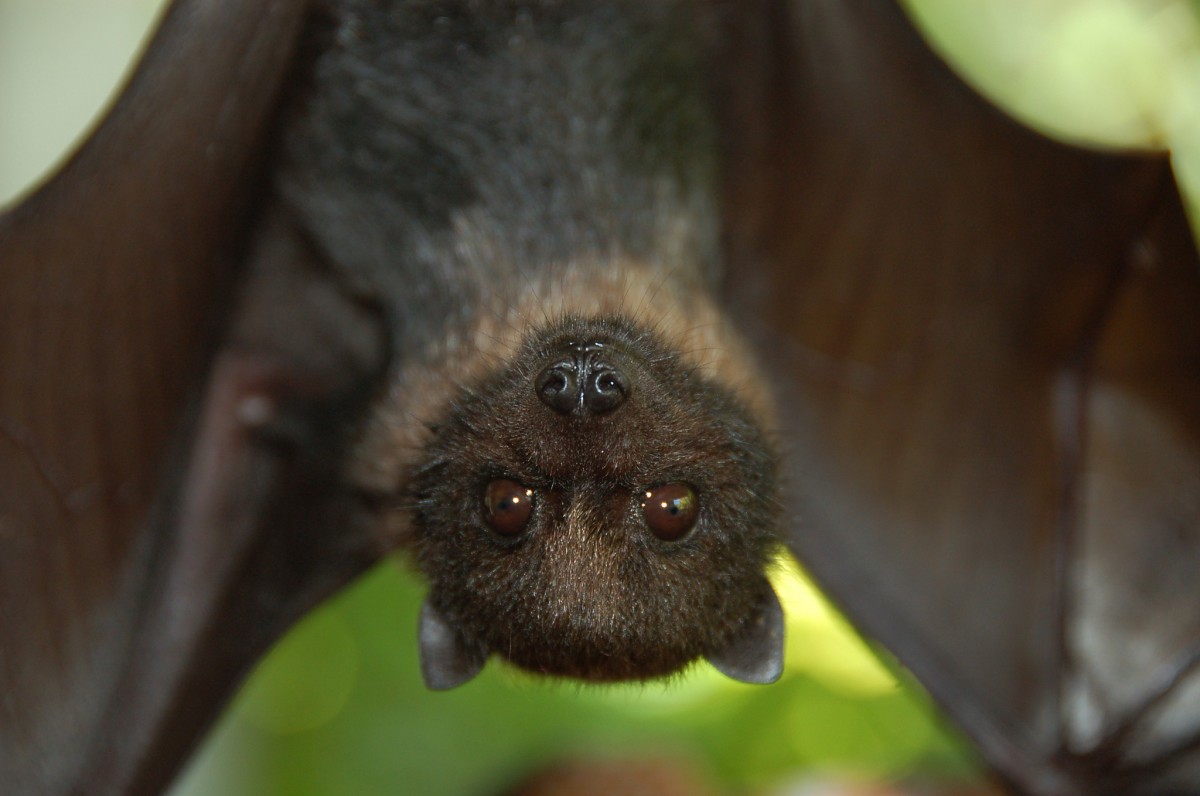
Bats make up nearly 20 percent of all living mammal species. Historically bats have been classified into two primary suborders — the Megachiroptera and the Megachiroptera. Large, Old World, fruit-eating bats were placed into the sub-order Megachiroptera. Bats of the Megachiroptera sub-order generally find their food by using their eye sight. Bats which find their food by echolocation were placed into the sub-order Microchiroptera. Microchiroptera bats tend to be smaller and feed primarily on insects. Because of the great diversity within the bat species, modern taxonomist are currently suggesting changes to the suborders of classifying the world's bats. A juvenile Mariana fruit bat, Pteropus mariannus, also called the flying fox is shown above and is a member of the Megachiroptera suborder. It is native to Guam, American Samoa and the Northern Mariana Islands.
Flying in for a snack
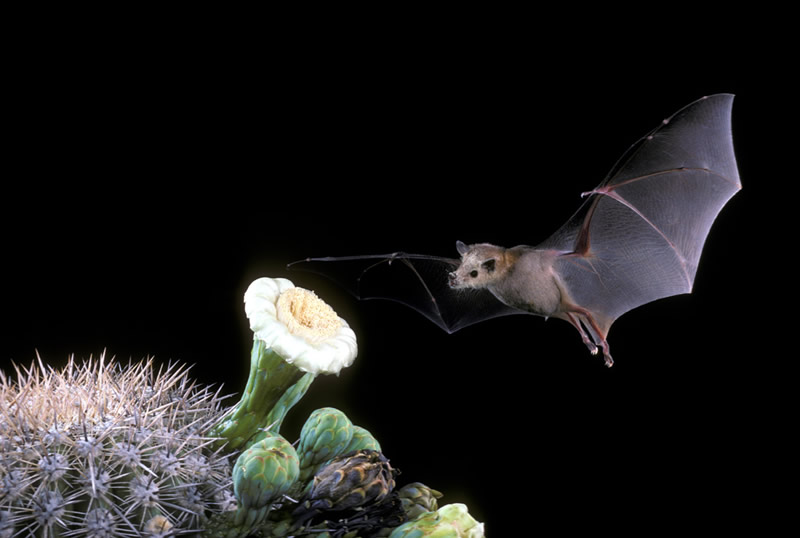
The 28 species of bats that make their colonies in Arizona all belong to the Microchiroptera sub-order. Most are insectivores with their colonies consuming thousands of flying insects each and every night. But two of Arizona bat species are consumers of nectar and pollen and not insects. They are the Mexican long-tongued bat, Choeronycteris mexicana, and lesser long-nosed bat, Leptonycteris yerbabuenae, shown above approaching a saguaro cactus, Carnegiea gigantea, bloom. Both of these gentle bats travel through the dark, summer sky of Arizona in search of food from the many night-blooming cereus cacti and agave plants found in southern Arizona. Almost all the desert night-blooming flowers are whitish in color making it easier for the bats to see. They do the work of oversized bees as they poke their heads into the flowers in search of nectar while grains of pollen attach to their fur. As they move from flower to flower, the bats pollinate the many spectacular night-blooming floral bouquets found during the early summer nights of the Sonoran Desert. These two species of bats will also ingest seeds and disperse in their droppings such seeds as they travel about from plant to plant.
Bug-eaters
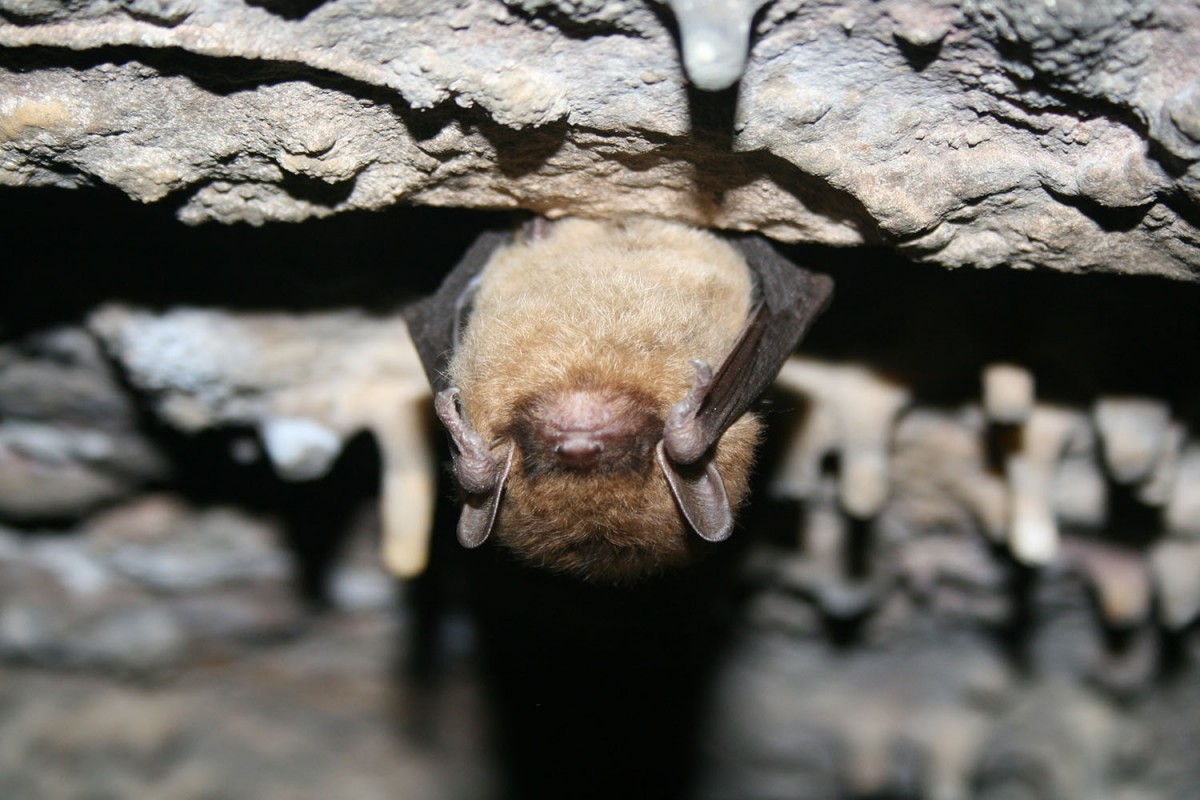
The other 26 species of bats found in Arizona dine each night solely on the thousands of flying insects that fill the Arizona sky. A variety of small brown bat species are the most common bats found in Arizona and play a crucial role in managing the flying nighttime insect populations. Entomologist estimate that a large colony of bats can eat a million pounds (453,592.37 kg) of insects nightly. Shown above is the little brown bat, Myotis lucifugus. The little brown bat is most common in the high desert and forests across northern Arizona and often comes into contact with humans as it often roost in man-made structures. They are small in size (3 inches/8 cm in length) and have a wingspan of only 8-10 inches (20-25 cm). Little brown bats navigate and locate prey through echolocation but recent DNA research indicated that the little brown bat's eyes are sensitive to both red and ultraviolet light.
Frozen in flight
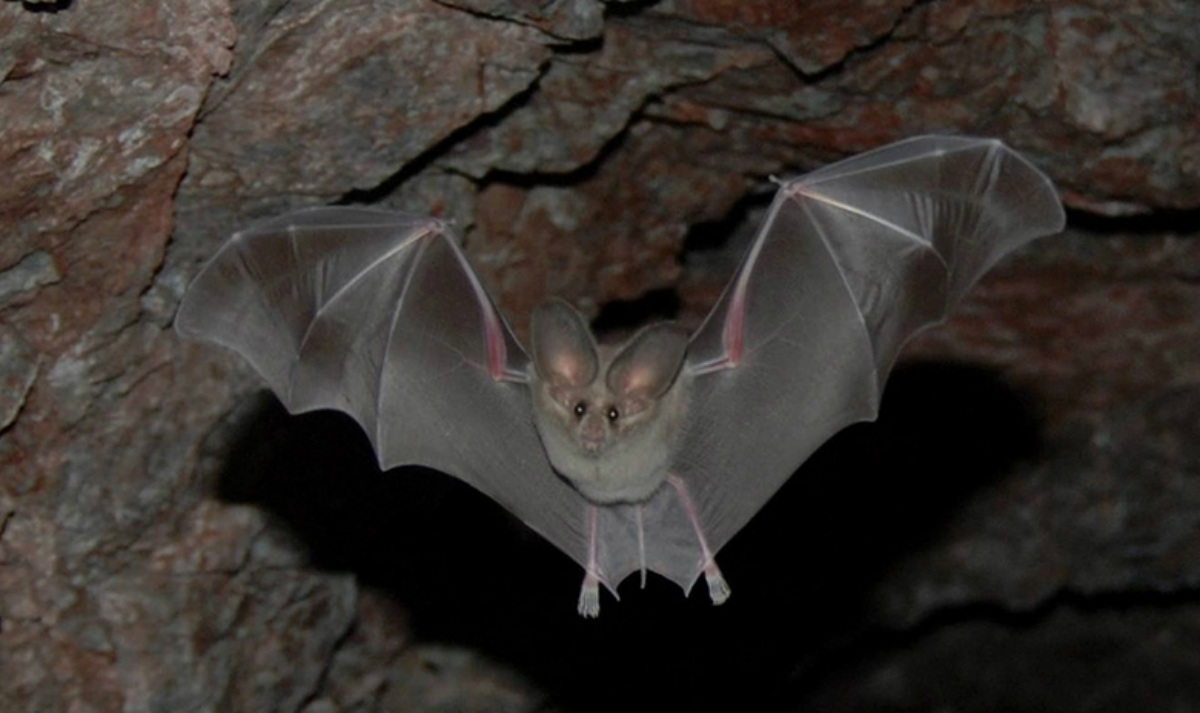
California Lead-nosed bats are common bats in the southwestern half of Arizona's Sonoran Desert south of the Mogollon Rim. Their range extends into the desert regions of California and Nevada southward to the tip of Baja California and into the Mexican states of Sonora, Chihuahua and Sinaloa. Ravenous eaters of insects, California Lead-nosed bats will capture their insect prey while in flight, hovering near foliage and while actually on the ground. They are known to supplement their diet of insects with fruits of cactus. California Lead-nosed bats have a life-span in the wild of 20-30 years. The Arizona Game and Fish Department rates the these bats with Wildlife of Special Concern designation.
Arizona's diversity

With six of the seven Merriam lifezones within its boundary, Arizona's wide diversity of landscapes produced a wide diversity of plants and animals within the state's border. One such diverse group of mammals who have survived and thrived in the assorted topography of Arizona are the bats. With forearms adapted as wings, bats are the only mammals on earth capable of powered flight. Bats belong to the order Chiroptera which translates to mean "hand wing" in reference to the bat's elongated fingers that support the flying membrane. They are found on every continent except Antarctica and have been a fascination of humans from the beginning of recored time. There are currently 1,240 species of bats recognized in the world. The United States is home to just 47 species of bats with Arizona being home to 28 species of these unique and amazing mammals. Shown above, a colony of Mexican free-tailed bats take flight from a cave in southern Arizona.
Better to hear
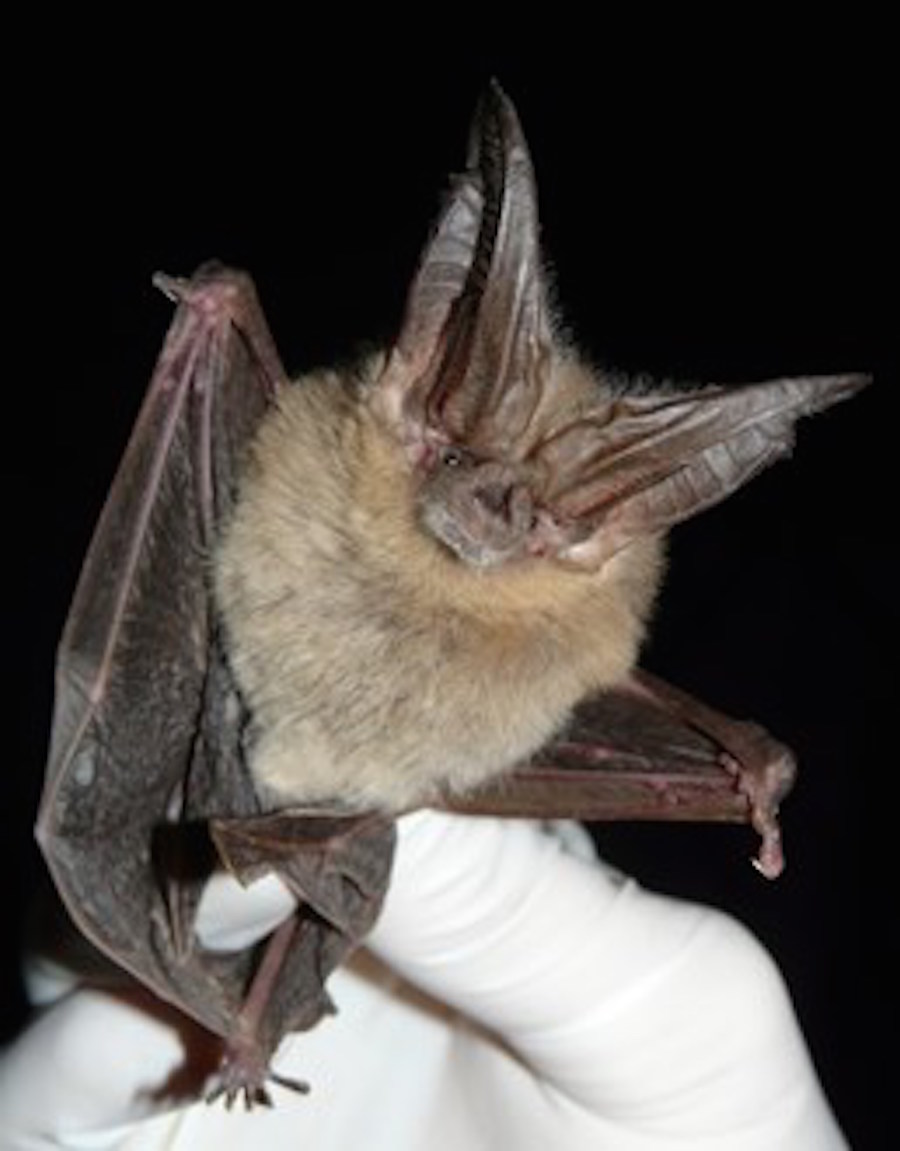
Townsend's big-eared bat, Corynorhinus townsendii, are a common, medium-sized bat with an extensive range from British Columbia southward down the Pacific Coast, eastward across the Great Plains and on into Central Mexico. They obviously have very big ears. which when laid back extend half way down their body. They also have two large glands on each side of its nose and was once known as the lump-nosed bat. Townsend's big-eared bats are almost always found near caves preferring large open spaces in which to roost. They are common in the pine forest as well as the arid desert regions of Arizona. Townsend's big-eared bats are skillful fliers and can actually hover at slow flying speeds. During the breeding season, Townsend's big-eared bats are known to form large maternity roosts.
Reserved elegance
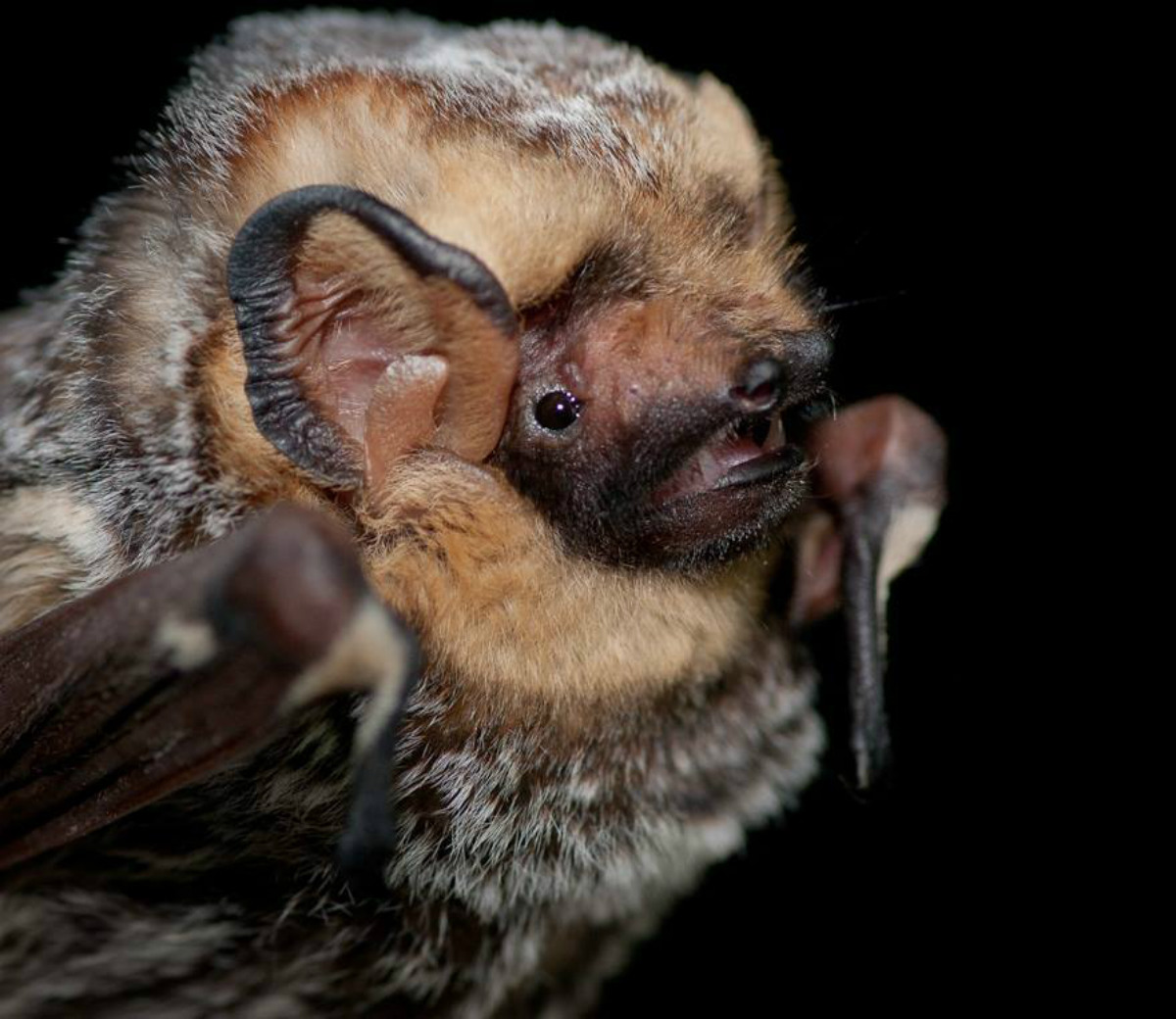
Horay bats, Lasiurus cinereus, are one of Arizona and all of North America's most secretive but beautiful bat species. They are the most widely distributed bat species in the Americas, ranging from Argentina to Canada as a result of their ability to adapt to many different habitats. About the size of a fat mouse, they are amazing fliers and colony of horay bats have migrated across vast expanses of ocean to Hawaii, Bermuda, Iceland and Scotland. They are seldom found in urban setting preferring to hunt in areas of undisturbed nature. They are a highly migratory species of bats, with both sexes forming groups upwards of one hundred bats traveling together.
Hoary bats primarily feed on moths but also are known to dine on mosquitoes. Because of their long, narrow wings, these bats rely on pure speed rather than agility to catch their insect prey. When disturbed, the hoary bat will make a shrill, hissing sound and are known for their audible, chatter during flight.
Big and small
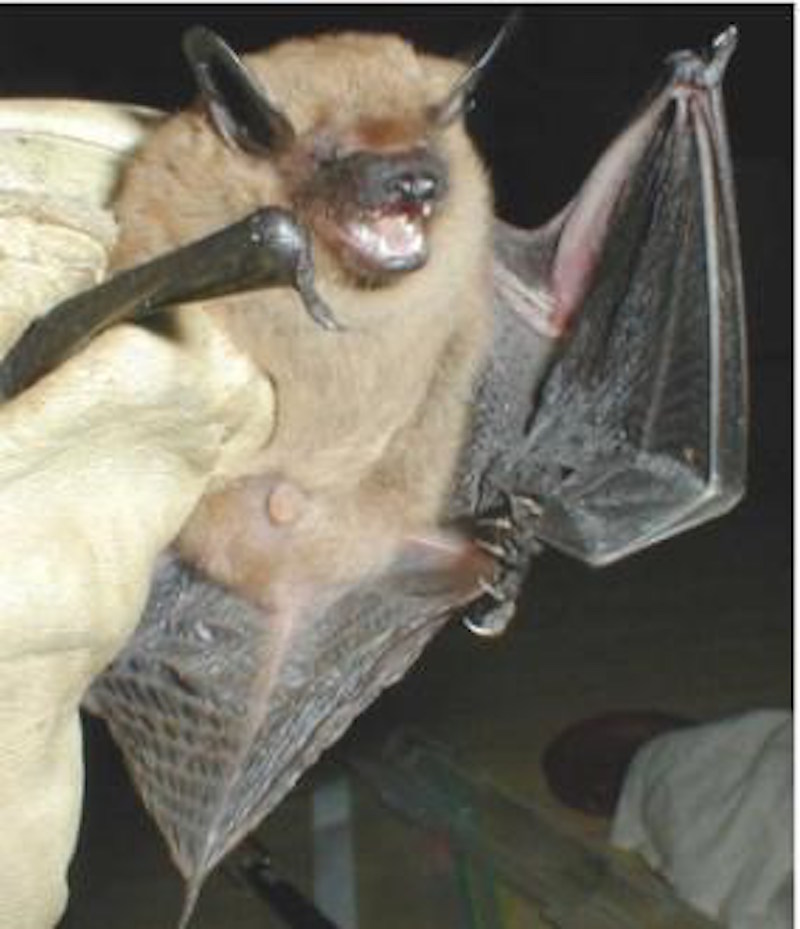
Big-brown bats, Eptesicus fuscus, are considered a large bat for North American bats but have small ears for such a large echolocator. They are one of the fastest bats capable of reaching speeds upwards of 40 mph (64 kph). Big-brown bats range from northern Canada, throughout the United States and on into the northern portions of South America. They have powerful jaws that can chew through the hard elytra of beetles, their favorite food. The big-brown bat can withstand weather conditions that other species succumb to and commonly hibernate to avoid harsh weather conditions. Their lips are fleshy for a bat species and their brown-to-glossy copper-colored fur make them a most attractive bat species.
Touchy animals
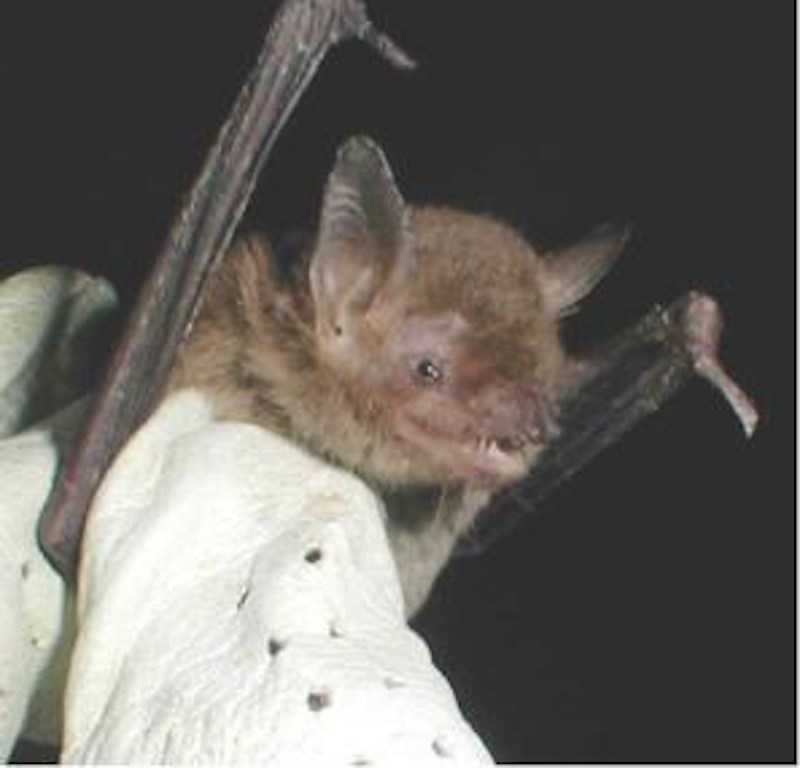
Cave myotis bats, Myotis velifer, are considered a medium-sized social bat whose favorite roosting site are deep within caves. They are often found in groups from 2,000-5,000 individuals. They range across the southwestern United States from central Oklahoma on into Mexico and Central America. They are avid insectivores that feed upon a wide variety of flying insects. In the wild, cave myotis bats can live upwards to 15 years but are themselves in danger from larger predators such as hawks, coyotes, snakes and owls. Cave myotis are very sensitive to human activity and have been known to abandon their roosts if disturbed by human activity. They have short, pointed ears and small dark eyes. Some 1,000-2,000 cave myotis bats create a summer maternity roost each summer in the Big Room of Kartchner Caverns State Park resulting in the Big Room being closed to visitors during the summer birthing season.
Sign up for the Live Science daily newsletter now
Get the world’s most fascinating discoveries delivered straight to your inbox.










